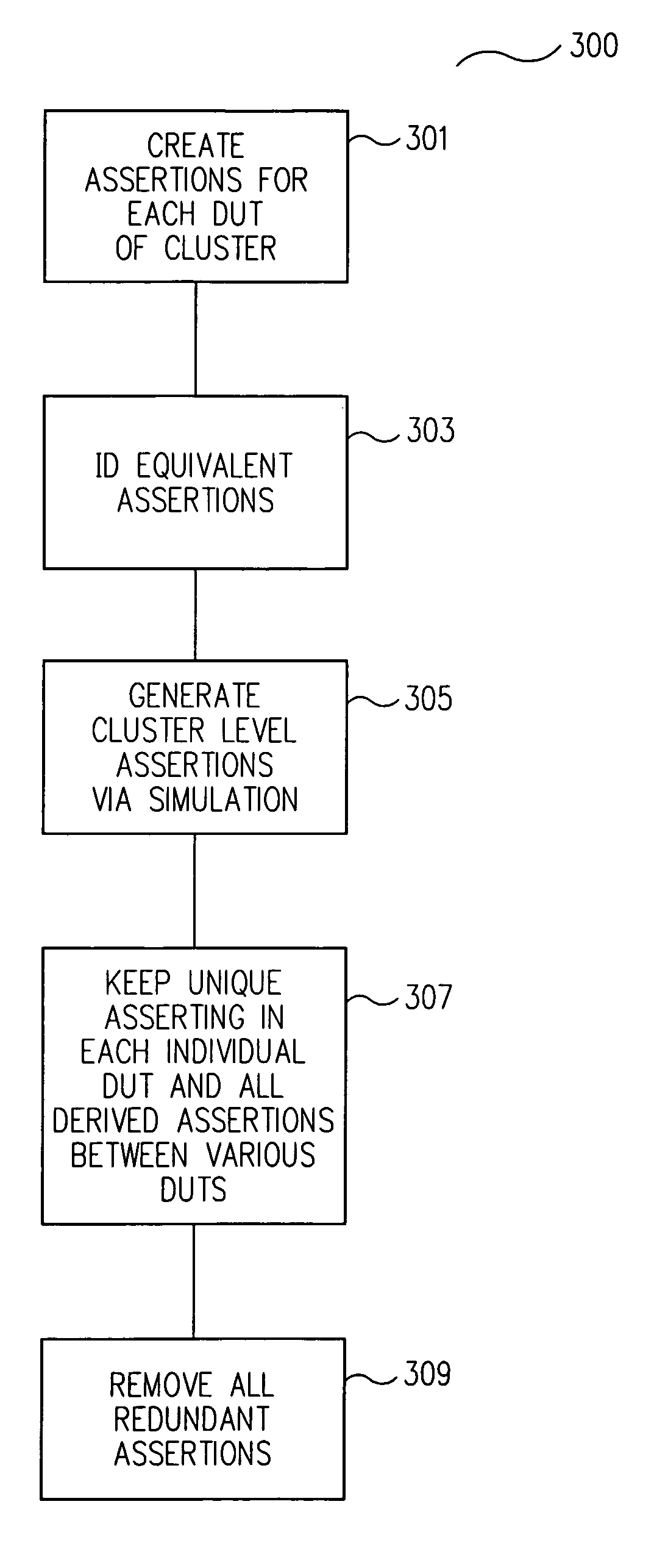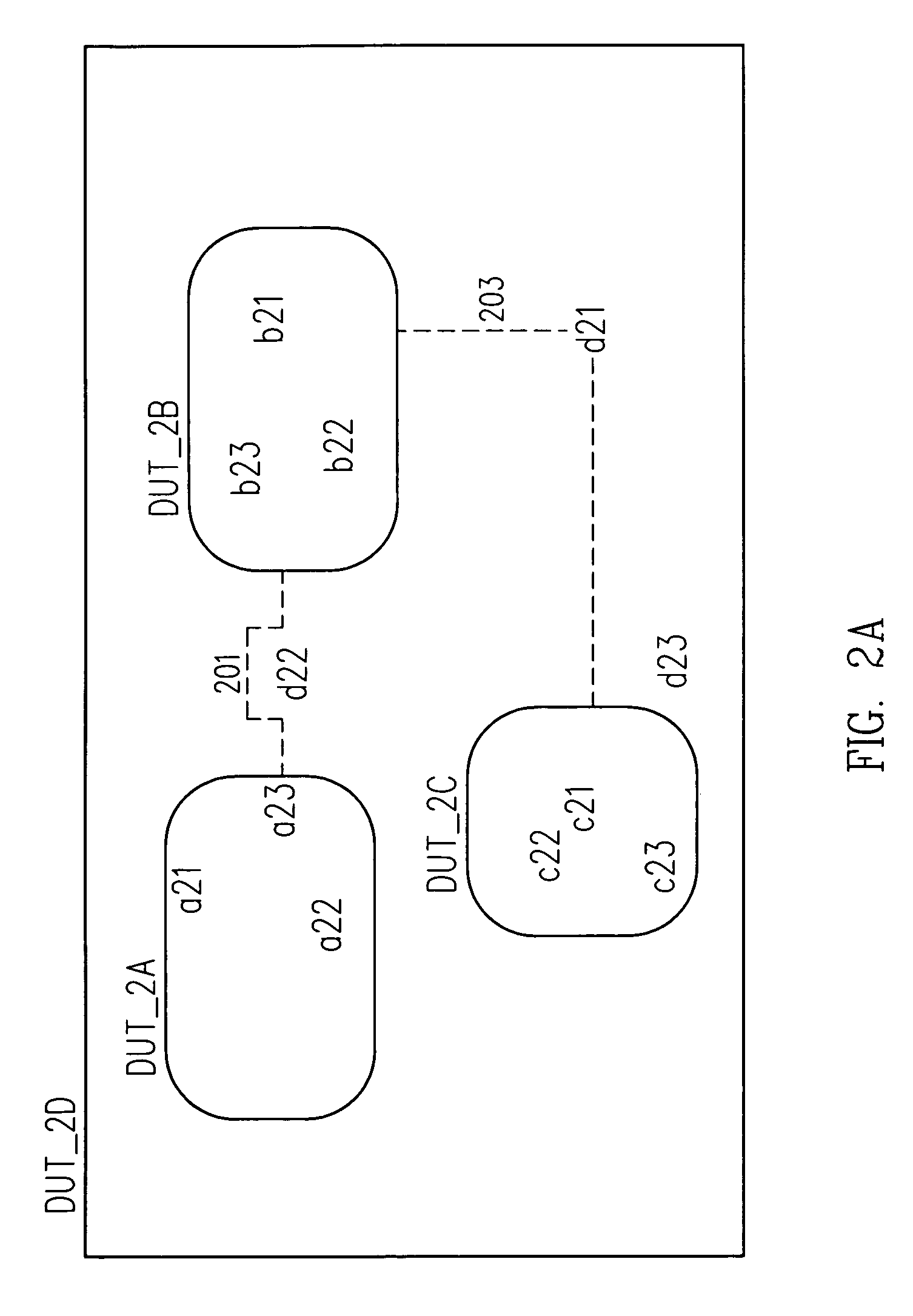Assertion morphing in functional verification of integrated circuit design
a functional verification and integrated circuit technology, applied in the field of functional verification of integrated circuit systems, can solve the problems of inability to guarantee that the resulting design will be error-free or “bug-free”, the verification of integrated circuit design is one of the most complicated and time-consuming parts of the design process, and the complexity of microprocessors and application specific integrated circuits (asics) has become more and more complex, so as to achieve smooth and smooth verification process, the effect of increasing productivity
- Summary
- Abstract
- Description
- Claims
- Application Information
AI Technical Summary
Benefits of technology
Problems solved by technology
Method used
Image
Examples
Embodiment Construction
[0036]The invention will now be described in reference to the accompanying drawings. The same or similar reference numbers may be used throughout the drawings and the following description to refer to the same or like parts.
[0037]The present invention provides a method and apparatus to transform or “morph” assertions so that an assertion defined in one DUT can be replicated, or derived, to propagate into other related DUTs. Consequently, using the method and apparatus of the present invention, individual DUTs can better leverage assertions developed independently in other DUT environments. This, in turn, provides for greater productivity and a faster, smoother verification process using the Formal and Assertion Based Verification methods.
[0038]According to one embodiment of the invention, a list of Formal verification method assertions for each DUT is collected and equivalent assertions are identified from the collected assertions of all block level DUTs comprising the system or clu...
PUM
 Login to View More
Login to View More Abstract
Description
Claims
Application Information
 Login to View More
Login to View More - R&D
- Intellectual Property
- Life Sciences
- Materials
- Tech Scout
- Unparalleled Data Quality
- Higher Quality Content
- 60% Fewer Hallucinations
Browse by: Latest US Patents, China's latest patents, Technical Efficacy Thesaurus, Application Domain, Technology Topic, Popular Technical Reports.
© 2025 PatSnap. All rights reserved.Legal|Privacy policy|Modern Slavery Act Transparency Statement|Sitemap|About US| Contact US: help@patsnap.com



